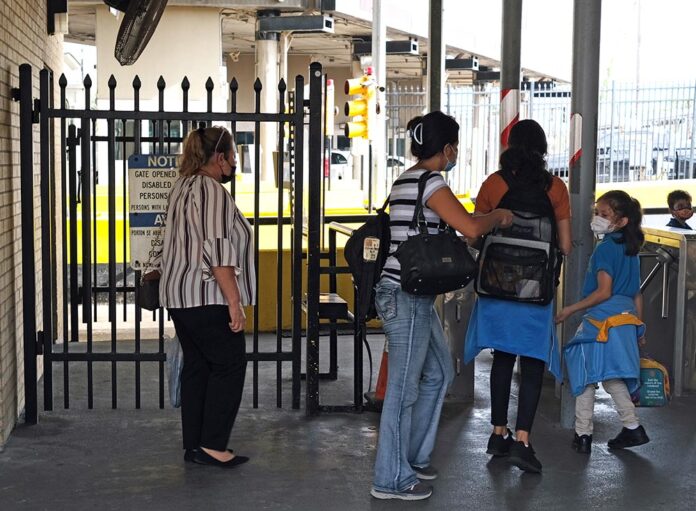Border officials and merchants got an early, but big, Christmas present last week when U.S. officials announced that restrictions at U.S. international bridges will be eased. Access was closed to nonessential travel some 20 months ago; beginning in early November anyone with proof of vaccination against the COVID-19 virus will be able to enter the country.
Officials on both sides of the border have called for this change for months. Mexican President Andres Manual Lopez Obrador even launched an effort to vaccinate as many border residents as possible, hoping that raising vaccination rates to U.S. levels might convince officials here to lift or ease the restrictions. Mexico’s overall vaccination rate is about 40%, but officials say that along the border it is closer to 70%.
The opening certainly is welcome news for border regions like the Rio Grande Valley, where the loss of casual cross-border shoppers has cost an estimated $5 billion per year in lost GDP, according to the Baker Institute. Cameron County Judge Eddie Treviño Jr. recently told us that bridge tolls for county bridges have dropped by $700,000 per month during the restrictions.
Don’t expect the process to be easy, however, and long wait times are likely.
Officials say Customs and Border Protection officers will ask everyone crossing into the United States about their vaccination status. Those officers will have the discretion to admit the crossers or refer them to secondary checkpoints, where more checks will be made. The process of reviewing every person’s vaccination information will take time, and backups should be expected.
Border agents will accept all COVID-19 vaccines that have been sanctioned by the World Health Organization. Only three vaccines are used in the United States but several more exist; President Trump issued an executive order mandating that only U.S.-made vaccines could be used here.
Officials will have to know what those vaccines are, and what proof of vaccination has been issued. They can expect plenty of fraud as people buy or print fake cards in order to cross.
Unfortunately, technology isn’t likely to help. Even this country has no national registry for any vaccinations, including COVID-19; that is handled by the states, and they aren’t linked into any national database — much less an international registry through which foreign bridge crossers’ vaccination status can be verified. The Centers for Disease Control and Prevention says that U.S.-vaccinated person who needs proof can get it more easily by going back to where they got the shots rather than going through state offices.
We hope federal officials see the value of creating such a national registry, as not all border crossers are local. The Valley, for example, is the winter home for people from several northern states, and an easily accessible database — especially for frequent crossers — not only would help them cross more easily, it should help reduce delays at the crossings.
Easing crossing restrictions is a great news for South Texas. We trust that the process will be monitored and officials will be able, and willing, to take steps that can make the process better.





